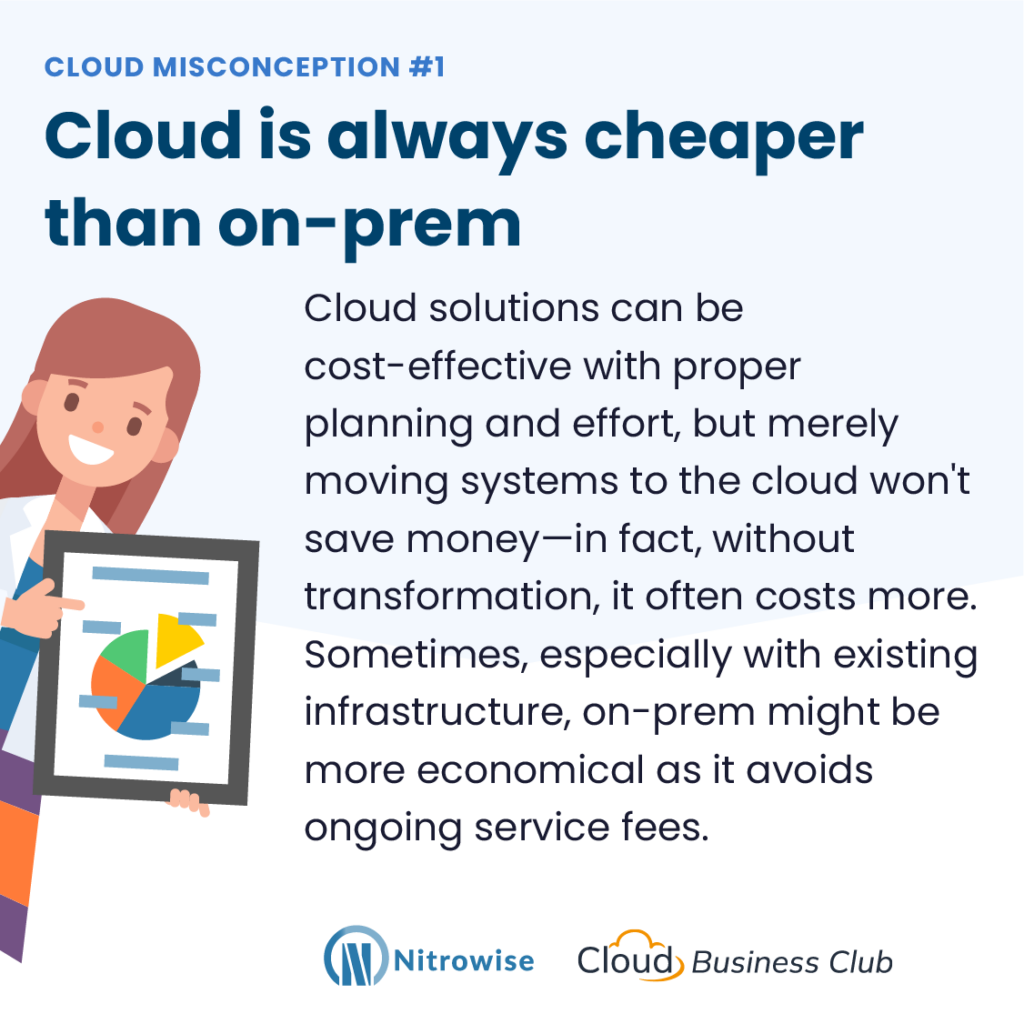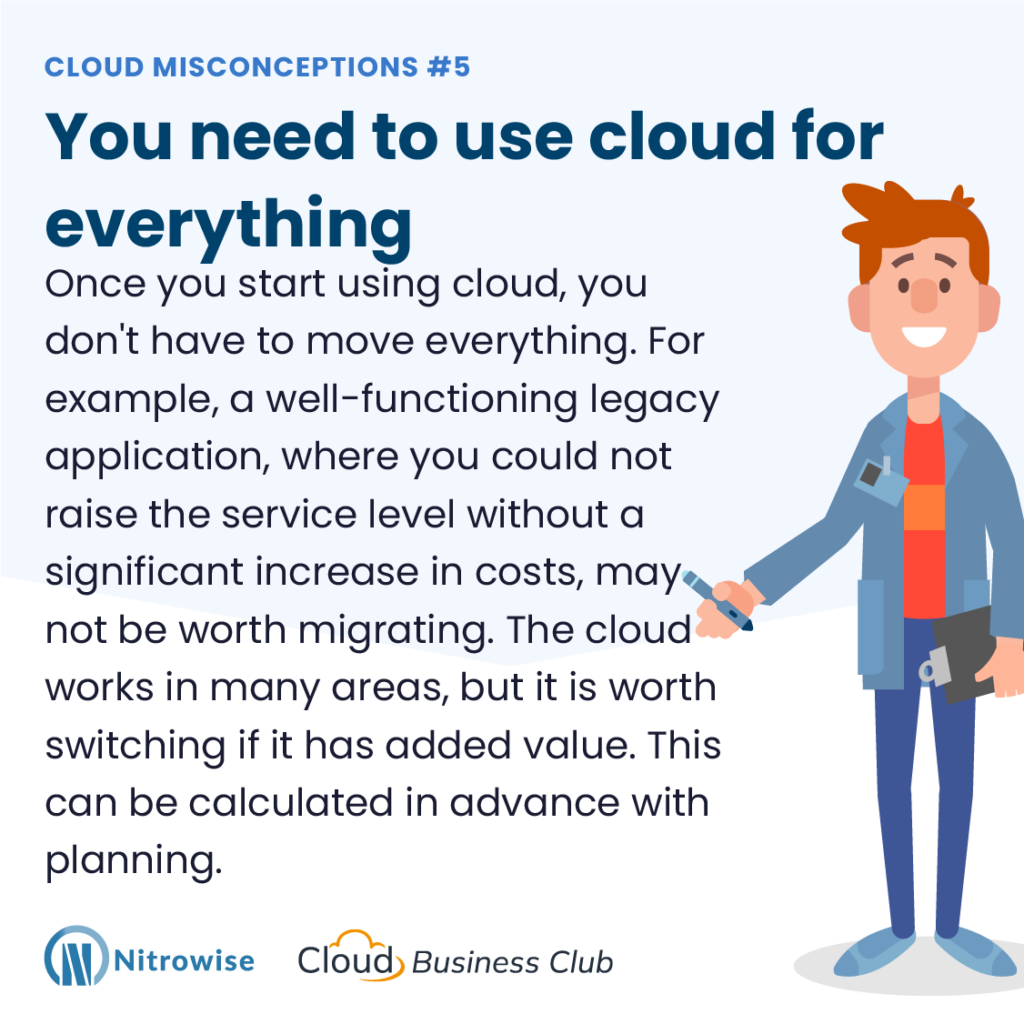We’ve collected some common misconceptions about cloud technology and try to highlight that things aren’t always black or white. A lot depends on the circumstances and how much work we are willing to invest in a development or in our own operation.
We will update the article weekly until the end of the series with our new posts, which we will publish one by one on our social media pages.
Misconception #1: Cloud is always cheaper

Cloud solutions can be cost-effective with proper planning and effort, but merely moving systems to the cloud won’t save money – in fact, without transformation, it often costs more. Sometimes, especially with existing infrastructure, on-prem might be more economical as it avoids ongoing service fees.
Misconception #2: On-prem is always cheaper

Although it is easy to think of on-prem solutions as free after purchasing the server, maintenance and upgrade costs, energy charges, and device obsolescence must be taken into account. It is important to consider all factors in the long term for proper planning.
Misconception #3: With cloud, there is never a service outage

Although cloud service providers promise high availability (the 3 big providers typically have a value above 99.9%), downtime of a few minutes a year can also occur. This is much better than the value found in rented server parks, but not 0. The impact of downtime can be minimized if we set up disaster recovery solutions in data centers in other region.
Misconception #4: Government organizations aren’t allowed to use cloud

Since the service providers already have data centers in many parts of the world, it can be guaranteed that the stored data does not leave the given area (e.g. European Union based on GDPR). In addition, high-level physical and network security protocols ensure the necessary protection. Thus, many state bodies use public cloud services (e.g. CIA, UK government, etc.).
Misconception #5: You need to use cloud for everything

Once you start using cloud, you don’t have to move everything. For example, a well-functioning legacy application, where you could not raise the service level without a significant increase in costs, may not be worth migrating. The cloud works in many areas, but it is worth switching if it has added value. This can be calculated in advance with planning.
Misconception #6: I just lift and shift my apps and I’m done!

There are applications that can be rehosted to the cloud using the simple lift and shift method, and they work well, but typically this is only one of the first steps in the migration. After that, there are usually quite a lot of optimization possibilities, as well as the operation in the cloud must be constantly paid attention to, so that we can apply its advantages.
Misconception #7: Either cloud or server. There is no transition.

The two technologies fit well together. There are companies that run certain applications on their own servers, while the rest are in the cloud. And there are those who take a hybrid cloud approach. E.g. for scaling: above a certain load, the application uses cloud resources, but by default it runs on its own server.
Misconception #8: Hackers have easier access to data stored in the cloud

You are just as responsible for the security of your services and data in the cloud as you would be if they were running on your own servers. However, cloud providers like AWS offer many additional security and protection services (e.g. AWS Shield for DDOS protection), which most business could not implement on their own or could only do so at a high cost.
The article was written as part of the Cloud Business Club project.